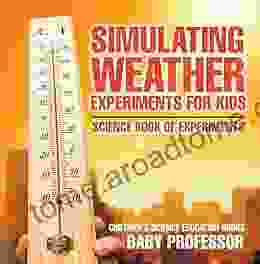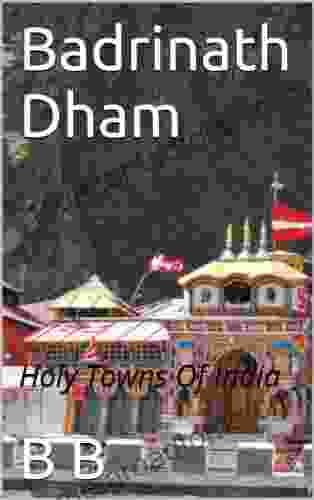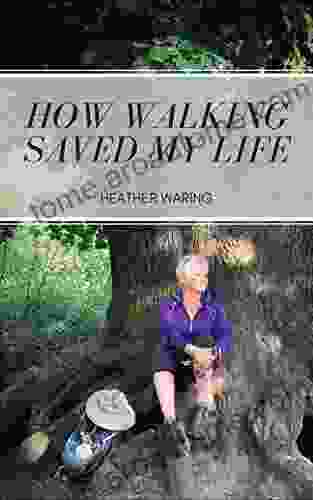Simulating Weather Experiments for Kids: Unlocking the Secrets of Earth Science

Weather, a fascinating aspect of our planet, plays a significant role in our daily lives. Its study, meteorology, helps us understand the intricacies of our atmosphere and its impact on the world around us. To foster children's curiosity and passion for Earth science, introducing them to weather experiments can be an incredibly engaging and educational experience.
This article aims to provide educators, parents, and science enthusiasts with a comprehensive guide to simulating weather experiments that will inspire young minds to explore the wonders of weather science.
Materials:
- Clear glass jar
- Warm water
- Ice cubes
- Hairdryer
Instructions:
- Fill the jar about 1/4 full with warm water.
- Place several ice cubes on top of the jar's lid.
- Blow warm air into the jar using a hairdryer.
Observation:
As warm air from the hairdryer enters the jar, it rises, carrying water vapor with it. The cold air from the ice cubes cools the water vapor, causing it to condense and form a cloud inside the jar.
4.2 out of 5
| Language | : | English |
| File size | : | 2599 KB |
| Print length | : | 64 pages |
Science behind it:
This experiment demonstrates the process of cloud formation. Warm, moist air rises into the atmosphere, where it cools and condenses into tiny water droplets or ice crystals, forming clouds.
Materials:
- Two clear plastic bottles (1 liter or larger)
- Water
- Dish soap
- Food coloring (optional)
- Duct tape
Instructions:
- Fill one bottle about 3/4 full with water.
- Add a few drops of dish soap and food coloring (optional) to the water.
- Connect the two bottles by tightly taping their openings together.
- Invert the bottles and hold them upright.
- Swiftly rotate one of the bottles in a circular motion.
Observation:
As you rotate the bottle, a tornado-like vortex will form inside the water, swirling and spiraling rapidly.
Science behind it:
This experiment simulates the formation of tornadoes. When you rotate the bottle, the water inside creates a centrifugal force that pushes the water outward. The combined effect of centrifugal force and gravity causes the water to form a vortex, resembling a tornado.
Materials:
- Clear plastic bottle
- Scissors
- Ruler
- Permanent marker
Instructions:
- Cut the top off the plastic bottle, approximately 5-7 cm above the base.
- Invert the top part of the bottle and insert it into the base, creating a funnel shape.
- Mark the side of the bottle in centimeters or inches to indicate the water level.
Observation:
Place the rain gauge outside during rainfall and observe the water level rise as rainwater collects inside.
Science behind it:
This experiment demonstrates how scientists measure rainfall. Rain gauges are used to collect and measure the amount of precipitation that falls in a given area over a specific period.
Materials:
- Clear glass jar
- Balloon
- Straw
- Tape
Instructions:
- Stretch the balloon over the mouth of the jar.
- Tape the straw to the center of the balloon.
- Mark the straw with a reference point.
Observation:
As the atmospheric pressure changes, the balloon will inflate or deflate, causing the straw to move. When the straw moves up, it indicates rising pressure, while a downward movement suggests falling pressure.
Science behind it:
This experiment simulates a barometer, an instrument used to measure atmospheric pressure. Changes in pressure can help predict weather patterns, as high pressure is often associated with clear skies, and low pressure indicates potential precipitation or storms.
Materials:
- Cardboard or foam board
- Scissors
- Straw
- Pushpin
- Tape
- Markers or paint
Instructions:
- Cut out a large arrow shape from the cardboard.
- Push the straw through the center of the arrow and secure it with a pushpin.
- Attach the arrow to a vertical surface, such as a fence or pole.
- Decorate the wind vane with markers or paint.
Observation:
The wind vane will rotate and point in the direction from which the wind is blowing.
Science behind it:
Wind vanes are used to indicate wind direction. The rotating arrow points into the wind, providing valuable information for weather forecasts and sailing.
- Make it interactive: Allow children to actively participate in the experiments and encourage them to ask questions and make predictions.
- Use real-time weather data: Incorporate current weather conditions into the experiments to make them more relevant and relatable.
- Connect to real-world events: Discuss how weather phenomena impact our daily lives and the environment.
- Encourage curiosity and exploration: Foster children's natural curiosity by asking open-ended questions and providing resources for further exploration.
- Have fun and be patient: Remember that learning should be enjoyable. Don't worry if experiments don't always go as expected, and use them as opportunities for improvisation and further learning.
Simulating weather experiments is an exciting and educational way to introduce children to the fascinating world of Earth science. By providing them with hands-on experiences, we can spark their curiosity, cultivate their understanding, and foster a lifelong appreciation for the complexities of our planet's weather systems.
4.2 out of 5
| Language | : | English |
| File size | : | 2599 KB |
| Print length | : | 64 pages |
Do you want to contribute by writing guest posts on this blog?
Please contact us and send us a resume of previous articles that you have written.
 Book
Book Novel
Novel Page
Page Chapter
Chapter Text
Text Story
Story Genre
Genre Reader
Reader Library
Library Paperback
Paperback E-book
E-book Magazine
Magazine Newspaper
Newspaper Paragraph
Paragraph Sentence
Sentence Bookmark
Bookmark Shelf
Shelf Glossary
Glossary Bibliography
Bibliography Foreword
Foreword Preface
Preface Synopsis
Synopsis Annotation
Annotation Footnote
Footnote Manuscript
Manuscript Scroll
Scroll Codex
Codex Tome
Tome Bestseller
Bestseller Classics
Classics Library card
Library card Narrative
Narrative Biography
Biography Autobiography
Autobiography Memoir
Memoir Reference
Reference Encyclopedia
Encyclopedia Simon Bacon
Simon Bacon Avinash C Kak
Avinash C Kak Deanna Fitzgerald
Deanna Fitzgerald Baba Masha
Baba Masha Bernardo Kastrup
Bernardo Kastrup Barbara Abercrombie
Barbara Abercrombie Bernard H Lavenda
Bernard H Lavenda Austin Channing Brown
Austin Channing Brown Joel L Parkyn
Joel L Parkyn Benj Pasek
Benj Pasek James Nicholls
James Nicholls Deborah Voith
Deborah Voith Behrooz Ghamari Tabrizi
Behrooz Ghamari Tabrizi Baby Darling
Baby Darling N K Gupta
N K Gupta Beth Aldrich
Beth Aldrich Benjamin L Corey
Benjamin L Corey James A Kennedy
James A Kennedy Helen Czerski
Helen Czerski Bernard Jolivalt
Bernard Jolivalt
Light bulbAdvertise smarter! Our strategic ad space ensures maximum exposure. Reserve your spot today!
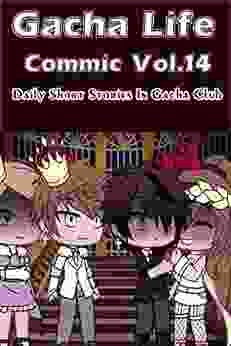
 Lee SimmonsUnlock the Enchanting World of Daily Short Stories in Gacha Club: A Literary...
Lee SimmonsUnlock the Enchanting World of Daily Short Stories in Gacha Club: A Literary... Miguel de CervantesFollow ·11.8k
Miguel de CervantesFollow ·11.8k Harvey BellFollow ·19.7k
Harvey BellFollow ·19.7k Asher BellFollow ·11.8k
Asher BellFollow ·11.8k E.E. CummingsFollow ·3.2k
E.E. CummingsFollow ·3.2k Maurice ParkerFollow ·10.1k
Maurice ParkerFollow ·10.1k Albert CamusFollow ·2.2k
Albert CamusFollow ·2.2k Joseph FosterFollow ·11k
Joseph FosterFollow ·11k Jorge AmadoFollow ·10.5k
Jorge AmadoFollow ·10.5k

 Corey Hayes
Corey HayesEasy Delicious Recipes To Heal The Immune System And...
: The Cornerstone...

 Cody Russell
Cody RussellMastering Medical Terminology: A Comprehensive Guide for...
Navigating the...

 Ibrahim Blair
Ibrahim BlairBeat Cancer Symptoms: Your Essential Guide to Symptom...
Are you struggling with the debilitating...
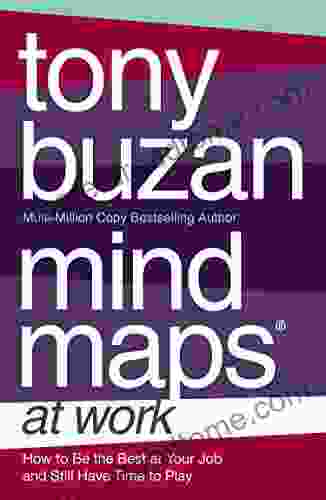
 Finn Cox
Finn CoxHow to Be the Best at Work and Still Have Time to Play:...
Are you tired...
4.2 out of 5
| Language | : | English |
| File size | : | 2599 KB |
| Print length | : | 64 pages |


